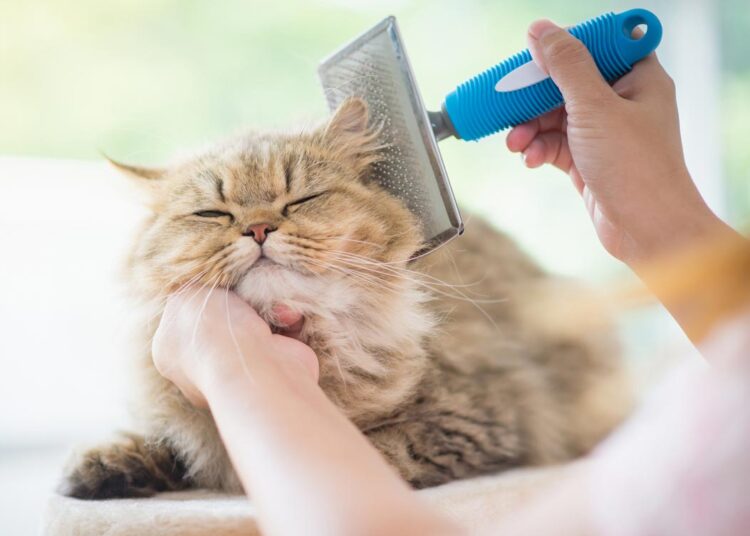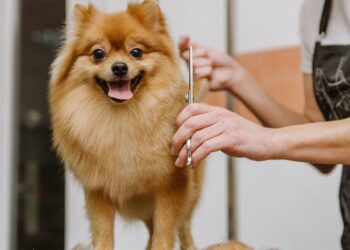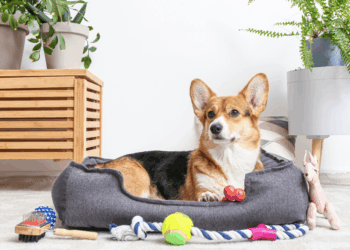Maintaining your pet’s hygiene and appearance is an essential part of responsible pet ownership. While professional groomers offer invaluable services, learning some DIY pet grooming hacks can save you money, reduce your pet’s stress, and even strengthen your bond. Many common grooming tasks can be safely and effectively performed at home with the right tools, techniques, and a dose of patience. This approach gives you greater control over the products used and allows you to tailor the experience to your pet’s individual needs and temperament.
This comprehensive guide will explore the benefits of at-home grooming, delve into essential tools and techniques for various tasks, offer practical tips for making the process enjoyable, and discuss when it’s best to seek professional help. Embracing DIY grooming can lead to a healthier, happier, and well-groomed companion.
Why Embrace DIY Pet Grooming?
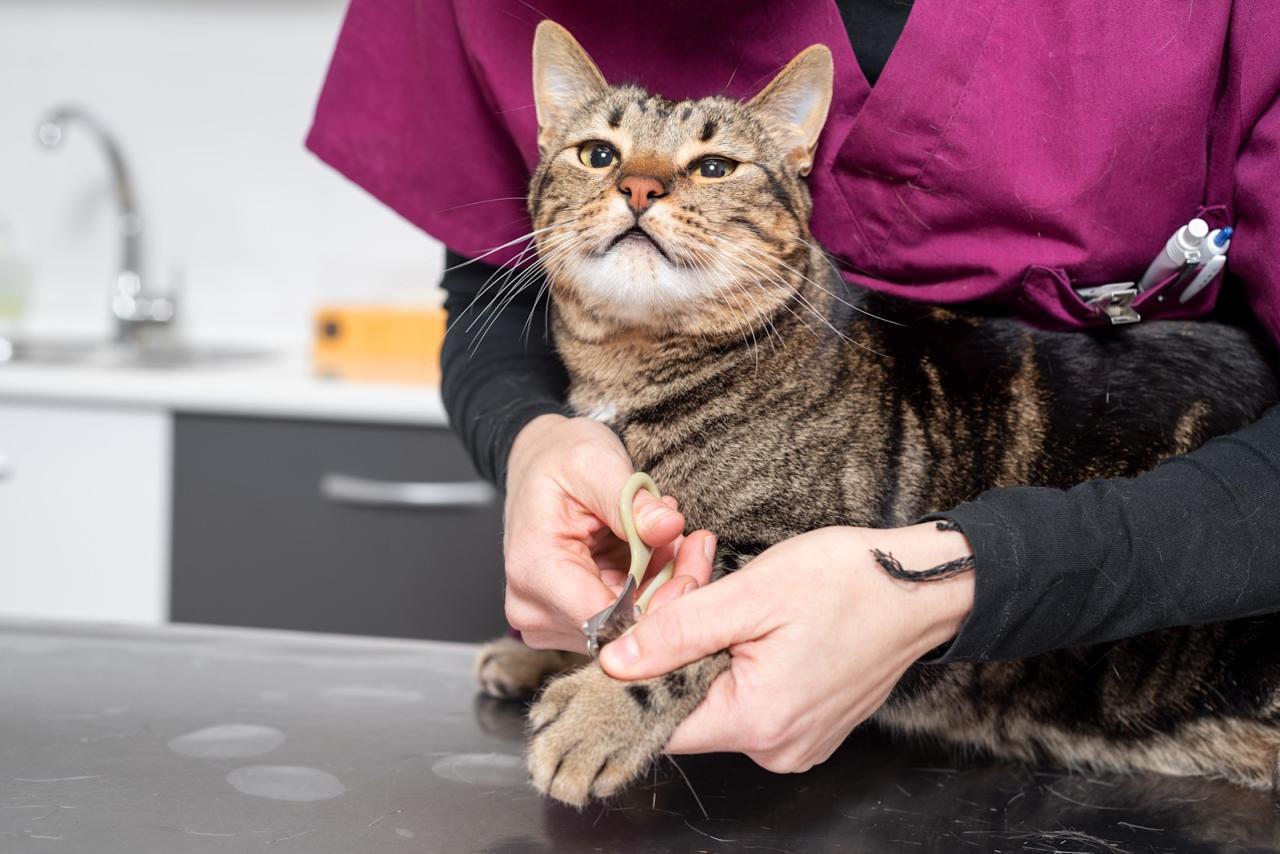
Beyond the apparent cost savings, there are numerous compelling reasons to consider grooming your pet at home.
A. Cost-Effectiveness
Professional grooming services, especially for larger breeds or those requiring specialized cuts, can be a significant recurring expense. Learning to perform basic tasks like bathing, brushing, and nail trims yourself can lead to substantial long-term savings.
B. Reduced Stress for Your Pet
Many pets find professional grooming environments stressful due to unfamiliar surroundings, new people, loud dryers, and extended periods away from their owners. Grooming at home, in a familiar environment with a trusted human, can significantly reduce anxiety and create a more positive experience.
C. Stronger Bond and Trust
Grooming sessions offer a unique opportunity for bonding. Gentle handling, praise, and positive reinforcement during grooming can reinforce trust and affection between you and your pet. It helps your pet associate handling with positive experiences.
D. Early Detection of Health Issues
Regular at-home grooming allows you to closely inspect your pet’s skin, coat, ears, eyes, and paws. This frequent inspection makes it easier to spot:
- Lumps or Bumps: Early detection of skin growths.
- Parasites: Fleas, ticks, or mites can be identified before infestation.
- Skin Irritations: Rashes, hot spots, or dry patches.
- Ear Infections: Redness, odor, or discharge in the ears.
- Dental Problems: Tartar buildup or gum inflammation (during a quick mouth check).
- Paw Injuries: Cuts, splinters, or cracked pads.Early detection often leads to quicker and more effective veterinary treatment, potentially saving on future medical costs.
E. Customization and Control
You have complete control over the products you use (shampoos, conditioners, brushes), ensuring they are gentle, natural, or suited for your pet’s specific skin and coat type (e.g., hypoallergenic shampoos). You can also tailor the pace and intensity of grooming to your pet’s comfort level.
F. Convenience
Grooming at home fits into your schedule. You don’t need to make appointments or travel to a groomer, saving time and logistical effort.
Essential Tools for Your DIY Grooming Kit
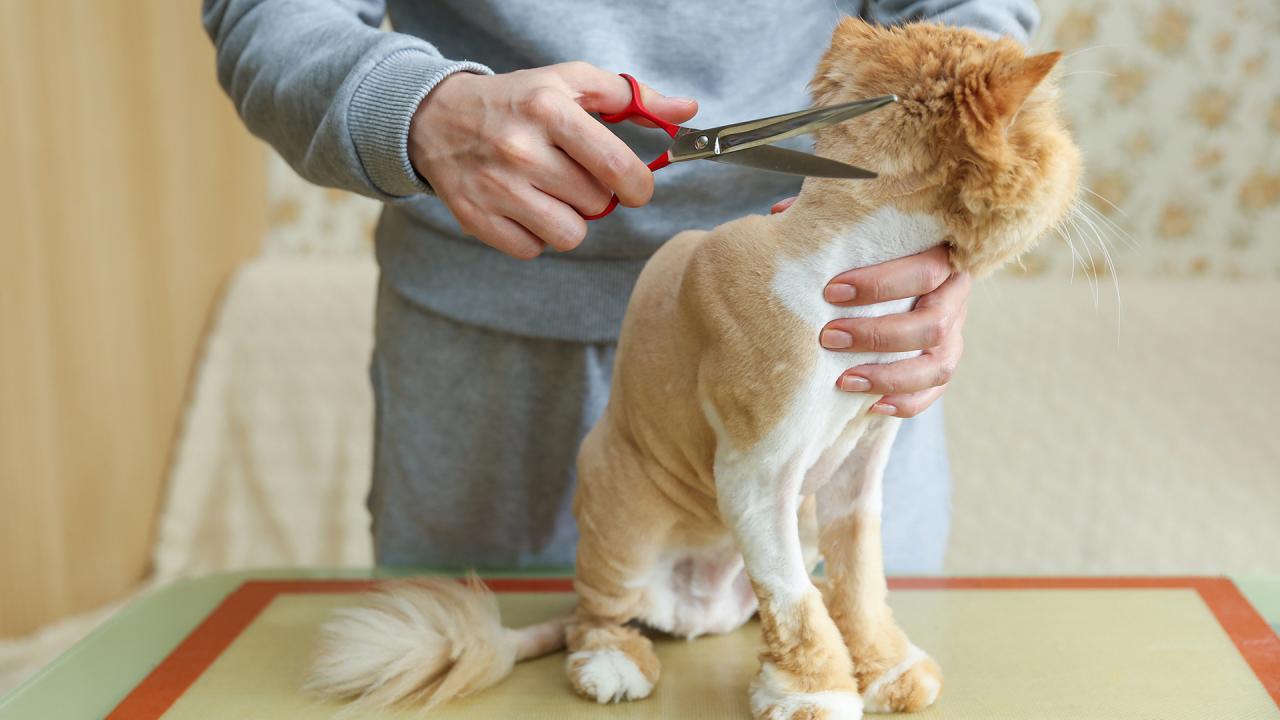
Before you begin, assemble a basic set of high-quality tools. Investing in good tools makes the job easier and more effective.
A. Brushing Tools
The type of brush depends on your pet’s coat.
- Slicker Brush: Best for removing mats, tangles, and loose undercoat, especially for medium to long-haired breeds.
- Pin Brush: Ideal for longer, silkier coats, helping to detangle and smooth.
- Bristle Brush: Good for short-haired breeds to remove loose fur and add shine.
- De-shedding Tool (e.g., Furminator): Highly effective for removing vast amounts of loose undercoat, significantly reducing shedding. Use sparingly and carefully to avoid skin irritation.
- Rubber Curry Brush/Glove: Excellent for short-haired dogs to stimulate circulation, remove loose hair, and distribute natural oils. Also great for use during baths.
- Undercoat Rake: For breeds with thick undercoats to remove dead fur without damaging the topcoat.
B. Bathing Supplies
- Pet-Specific Shampoo and Conditioner: Never use human shampoo, as pet skin has a different pH. Choose formulas appropriate for your pet’s skin sensitivities or coat needs (e.g., hypoallergenic, de-shedding, flea and tick).
- Towels: Absorbent towels, or even a specialized pet drying towel/robe.
- Non-Slip Mat: For the tub or shower to prevent slips and make your pet feel more secure.
- Spray Nozzle/Handheld Shower: Makes rinsing much easier and more thorough.
- Cotton Balls: For placing in ears to prevent water ingress during bathing.
C. Nail Trimming Tools
- Nail Clippers (Scissor-style or Guillotine-style): Choose a sharp, sturdy pair appropriate for your pet’s size.
- Nail Grinder (Dremel-style): An alternative to clippers, good for pets sensitive to clipping or for achieving smoother, shorter nails.
- Styptic Powder (or cornstarch/flour): Essential to have on hand in case you cut too close to the quick and cause bleeding.
D. Ear and Eye Care
- Pet-Specific Ear Cleaner: Avoid using rubbing alcohol or hydrogen peroxide.
- Cotton Balls or Soft Cloths: For cleaning ears and eyes. Never use Q-tips inside the ear canal.
- Pet-Safe Eye Wipes: For removing tear stains or debris around the eyes.
E. Optional Tools
- Pet Dryer (Low-Heat, Pet-Specific): Human hair dryers can be too hot and noisy. A pet dryer speeds up drying and helps with de-shedding.
- Grooming Table with Arm: Provides a raised, secure surface for smaller pets, making grooming easier on your back.
- Pet Shears/Clippers: For specific trimming (e.g., sanitary trims, paw pad hair), or for more advanced full-body clipping. Requires practice and caution.
Step-by-Step DIY Grooming Hacks
Let’s break down the core grooming tasks you can perform at home.
A. Brushing Your Pet (The Foundation)
Regular brushing is the simplest yet most effective grooming hack.
- Frequency: Daily for long-haired pets, a few times a week for medium-haired, and weekly for short-haired breeds.
- Technique:
- Start Gentle: Begin with light strokes to get your pet used to the brush.
- Work in Sections: Especially for long-haired pets, tackle small areas at a time.
- Go With the Grain: Brush in the direction of hair growth.
- Tackle Tangles Gently: Use a de-matting spray or conditioner, then gently work through mats with your fingers or a wide-toothed comb before brushing. Never pull.
- Positive Reinforcement: Offer treats and praise throughout the session.
- Hack: For shedding pets, try brushing outdoors to contain the fur. For reluctant pets, introduce the brush slowly, letting them sniff it, then brief strokes followed by treats. Gradually increase duration.
B. Bathing Your Pet (The Clean Up)
Bathing too frequently can strip natural oils, but regular baths keep coats healthy and clean.
- Preparation is Key:
- Brush First: Always brush thoroughly before bathing to remove loose fur and tangles. Wetting matted fur will only make tangles worse.
- Gather Supplies: Have shampoo, conditioner, towels, non-slip mat, and cotton balls within reach.
- Protect Ears: Place cotton balls loosely in your pet’s ears to prevent water from entering the ear canal, which can lead to infections.
- The Bath:
- Water Temperature: Use lukewarm water.
- Wet Thoroughly: Start wetting your pet from the neck down, ensuring the entire coat is saturated.
- Apply Shampoo: Apply shampoo, avoiding eyes and ears. Lather gently, massaging into the coat.
- Rinse, Rinse, Rinse! This is crucial. Residue can cause skin irritation. Rinse until the water runs clear and no suds remain.
- Condition (Optional but Recommended): Apply conditioner, let it sit for a few minutes, then rinse thoroughly.
- Drying:
- Towel Dry Vigorously: Squeeze out excess water and towel dry as much as possible.
- Air Dry or Pet Dryer: If using a dryer, ensure it’s a pet-specific, low-heat model. Keep it moving to avoid hot spots.
- Hack: Use a lick mat smeared with peanut butter (xylitol-free!) on the wall of the tub to distract and calm your pet during the bath. For really nervous pets, consider a pre-bath walk to tire them out.
C. Nail Trimming (The Dreaded Task)
This can be the most intimidating task, but regular trims are vital for paw health and comfort.
- Frequency: Every 2-4 weeks, or when you hear their nails clicking on hard floors.
- Technique:
- Hold Securely: Hold your pet’s paw firmly but gently.
- Identify the Quick: On clear nails, you can see the pink “quick” (blood vessel). On dark nails, it’s harder; trim only the very tip.
- Small Trims: It’s better to trim too little than too much. You can always take off more.
- Angle: For dogs, trim at a 45-degree angle.
- Styptic Powder Ready: Have it nearby just in case.
- Hack:
- Gradual Introduction: Start by just handling their paws and rewarding them. Gradually introduce the clippers, rewarding calm behavior.
- One Nail at a Time: For nervous pets, trim just one or two nails a day.
- Peanut Butter Distraction: Smear peanut butter on a surface they can lick while you trim.
- Nail Grinder: If clippers are too stressful, a grinder can be a gentler option. Introduce the sound and vibration slowly.
- Trim After a Bath/Walk: Nails are softer after a bath, and a walk can tire them out.
D. Ear Cleaning (The Delicate Task)
Regular ear cleaning helps prevent infections, especially for floppy-eared breeds.
- Frequency: Weekly or bi-weekly, or as recommended by your vet.
- Technique:
- Check First: Look for redness, swelling, odor, or excessive discharge. If present, consult your vet first.
- Apply Cleaner: Gently lift the ear flap and squeeze pet-specific ear cleaner into the ear canal (follow product instructions).
- Massage: Gently massage the base of the ear for 20-30 seconds to help the cleaner break up debris. You’ll hear a squishing sound.
- Wipe: Allow your pet to shake their head (have a towel ready!). Then, use a cotton ball or soft cloth to wipe away debris from the outer ear and visible parts of the canal. Never insert Q-tips deep into the ear canal.
- Hack: Make it a quick, routine part of grooming, followed by a treat. If your pet is resistant, consult your vet; there might be discomfort or an underlying infection.
E. Eye Care (The Gentle Wipe)
Regularly wipe around your pet’s eyes to remove tear stains or discharge.
- Technique:
- Soft Cloth/Wipe: Use a soft, damp cloth or a pet-specific eye wipe.
- Wipe Away From Eye: Gently wipe away from the inner corner of the eye outwards. Use a fresh part of the cloth for each eye to prevent cross-contamination.
- Trim Hair: For long-haired breeds, carefully trim hair around the eyes (blunt-nosed scissors are safer) to prevent irritation and matting.
- Hack: If tear stains are a persistent issue, consider specific pet eye washes or dietary changes (after vet consultation).
F. Paw Pad and Sanitary Trims (The Detail Work)
These are important for hygiene and comfort.
- Paw Pads: Trim excess hair between paw pads to prevent matting, slipping on hard floors, and accumulation of debris (burrs, dirt, ice). Use blunt-nosed scissors or a small, quiet pet clipper.
- Sanitary Area: For long-haired pets, trim the hair around the anus and genitals to keep the area clean and prevent fecal matting. Be extremely careful and use blunt-nosed scissors or a small clipper.
- Hack: Use a comb to pull hair up between the pads, then carefully trim. For sanitary trims, always go slowly and ensure your pet is calm.
Making Grooming a Positive Experience
Positive reinforcement is the ultimate DIY grooming hack.
A. Start Early: Introduce grooming tools and handling from a young age (for puppies/kittens).
B. Keep Sessions Short: Especially when starting out. Gradually increase duration as your pet becomes more comfortable.
C. Use High-Value Treats: Reward calm behavior generously with their favorite treats.
D. Praise and Affection: Offer verbal praise and gentle petting throughout the process.
E. Take Breaks: If your pet shows signs of stress (lip licking, yawning, stiffening, growling), take a break.
F. Be Patient and Calm: Your pet will pick up on your energy. If you’re stressed, they will be too.
G. Practice Handling: Regularly touch your pet’s paws, ears, tail, and mouth when not grooming, so they get used to being handled.
When to Call the Professionals
While DIY grooming is empowering, there are times when professional expertise is invaluable.
A. Complex Haircuts: Breeds requiring specific, intricate cuts (e.g., Poodles, some Terriers) are best left to experienced groomers.
B. Severe Matting: If your pet has extensive, tight mats, attempting to remove them at home can be painful and lead to skin damage. Professional groomers have specialized tools and techniques for safe de-matting or humane shaving.
C. Behavioral Challenges: If your pet is highly aggressive, anxious, or fearful during grooming despite your best efforts, a professional groomer or veterinary behaviorist might be needed to handle them safely.
D. Medical Conditions: Pets with skin conditions, severe allergies, or mobility issues may require a groomer who is experienced in handling delicate situations or using specific therapeutic products.
E. Anal Gland Expression: This is a sensitive procedure best left to a veterinarian or experienced groomer.
F. Lack of Confidence/Time: If you’re uncomfortable, lack the time, or don’t have the proper tools, a professional groomer is always a great option.
The Long-Term Benefits of Consistent Home Grooming
Establishing a consistent DIY grooming routine offers compounding benefits that extend beyond aesthetics.
A. Better Coat Health: Regular brushing distributes natural oils, preventing dryness and promoting a healthy shine.
B. Reduced Allergens: Less loose fur and dander means fewer allergens in your home, beneficial for allergy sufferers.
C. Improved Hygiene: Clean ears, trimmed nails, and tidy sanitary areas prevent infections and discomfort.
D. Early Detection, Healthier Pet: As mentioned, you become the first line of defense against potential health issues.
E. Enhanced Comfort: Pets are simply more comfortable when their coat is free of mats, their nails aren’t overgrown, and their ears are clean.
Conclusion
The world of DIY pet grooming hacks offers a fantastic opportunity to take an active role in your pet’s well-being and appearance. With the right tools, a bit of patience, and a positive attitude, you can master essential grooming tasks, save money, and deepen the bond with your beloved companion. Remember to start slowly, prioritize your pet’s comfort, and don’t hesitate to seek professional help for tasks beyond your comfort level or expertise.
Embracing at-home grooming is more than just a chore; it’s an act of love that contributes significantly to your pet’s overall health, happiness, and comfort, ensuring they look and feel their absolute best. Get ready to transform grooming into a rewarding experience for both of you!

